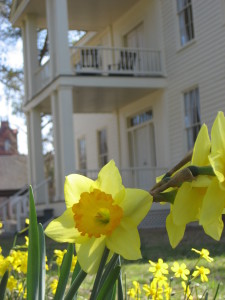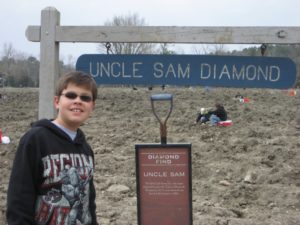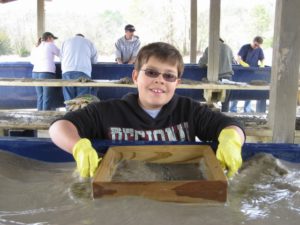 Historic Washington State Park transports visitors to the past when great western pioneers like Sam Houston and Davy Crockett traveled the Southwest Trail. It’s a hidden gem just twenty minutes off Interstate-30 in Arkansas.
Historic Washington State Park transports visitors to the past when great western pioneers like Sam Houston and Davy Crockett traveled the Southwest Trail. It’s a hidden gem just twenty minutes off Interstate-30 in Arkansas.
Frontier history
Originally just a supply depot along the Southwest Trail, Washington grew into a major town in the 1830’s. In its heyday, the town boasted sixteen doctors, as many lawyers, and three hotel keepers along with a host of craftsman and merchants – impressive for a frontier settlement.
Historic Washington State Park captures the town’s golden age — 1830 through 1880 — with its living history exhibits and reenactments. Over a dozen buildings have been restored including the 1836 Courthouse that served as Arkansas’ State Capital during the Civil War; a tavern purportedly where Houston, Crockett, and Austin planned the liberation of Texas from Mexico; Greek-Revival styled homes built in the mid 1800s; and even a log home circa 1835. Other buildings like the blacksmith shop are reconstructions.
The tour
The 1874 Hempstead County Courthouse houses the park visitor center. For a nominal fee visitors walk through town where costumed docents at each building bring history to life with stories of Washington’s past. Not all buildings are open each day, but you will be able to tour several of the historic structures.
- The 1920 Print Museum is a favorite with its functioning antique printing press. First published in Washington in 1839 the Washington Telegraph is the oldest, continuously published weekly newspaper in Arkansas.
- The legendary Bowie knife was made by Washington resident James Black, a silversmith, for frontiersman James Bowie. Tour the blacksmith to learn more.
- Those interested in antique weapons will want to visit the B.W. Edwards Weapons Museum. Housed in the Old Bank Building, over 600 historic rifles and pistols are on display.
- Other historic buildings provide visitors with a glimpse into everyday life. Homes of prominent Washington residents are furnished as they would have been in the mid 1800’s.
Allow at least three hours for the walking tour.
Annual highlights
A favorite time to visit the park is in March when thousands of naturalized jonquils create yellow flowering carpets throughout the town. The park’s Jonquil Festival, a three-day event with craft fair, is in mid-March. Historic Washington State Park hosts several reenactments throughout the year including a Civil War weekend in November. And the park year culminates with its December Christmas and Candlelight weekends.
When you go
Historic Washington State Park is located eight miles northwest of Hope, Ark., on Highway 278. The park is open daily from 8 a.m. to 5 p.m. Before you leave the park, be sure to dine at Williams’ Tavern Restaurant. Located in an historic 1832 building, Williams’ Tavern serves southern food at affordable prices. The restaurant is on the grounds and open daily for lunch from 11 a.m. until 3 p.m.
Tip
For those wanting a longer visit, Hope offers numerous lodging options. Add nearby Crater of the Diamonds to your itinerary for a fun-packed weekend.

 Prospectors, young and old, find treasures at Crater of the Diamonds State Park in Murfreesboro. The park is the only diamond mine open to the public – and the best part – you keep whatever you unearth.
Prospectors, young and old, find treasures at Crater of the Diamonds State Park in Murfreesboro. The park is the only diamond mine open to the public – and the best part – you keep whatever you unearth. Park regulars use water to sluice dirt away from the stones and then sift through the remaining gravel in search of diamonds. With the right rhythm, the dense diamonds settle to the sluicing pan’s bottom separating out from the washed away dirt. This is hard work but fun to try. The park has two covered washing sheds for water sifting. It’s a lively place with fellow diamond hunters readily helping each other by offering tips and assistance to novice treasure seekers.
Park regulars use water to sluice dirt away from the stones and then sift through the remaining gravel in search of diamonds. With the right rhythm, the dense diamonds settle to the sluicing pan’s bottom separating out from the washed away dirt. This is hard work but fun to try. The park has two covered washing sheds for water sifting. It’s a lively place with fellow diamond hunters readily helping each other by offering tips and assistance to novice treasure seekers.